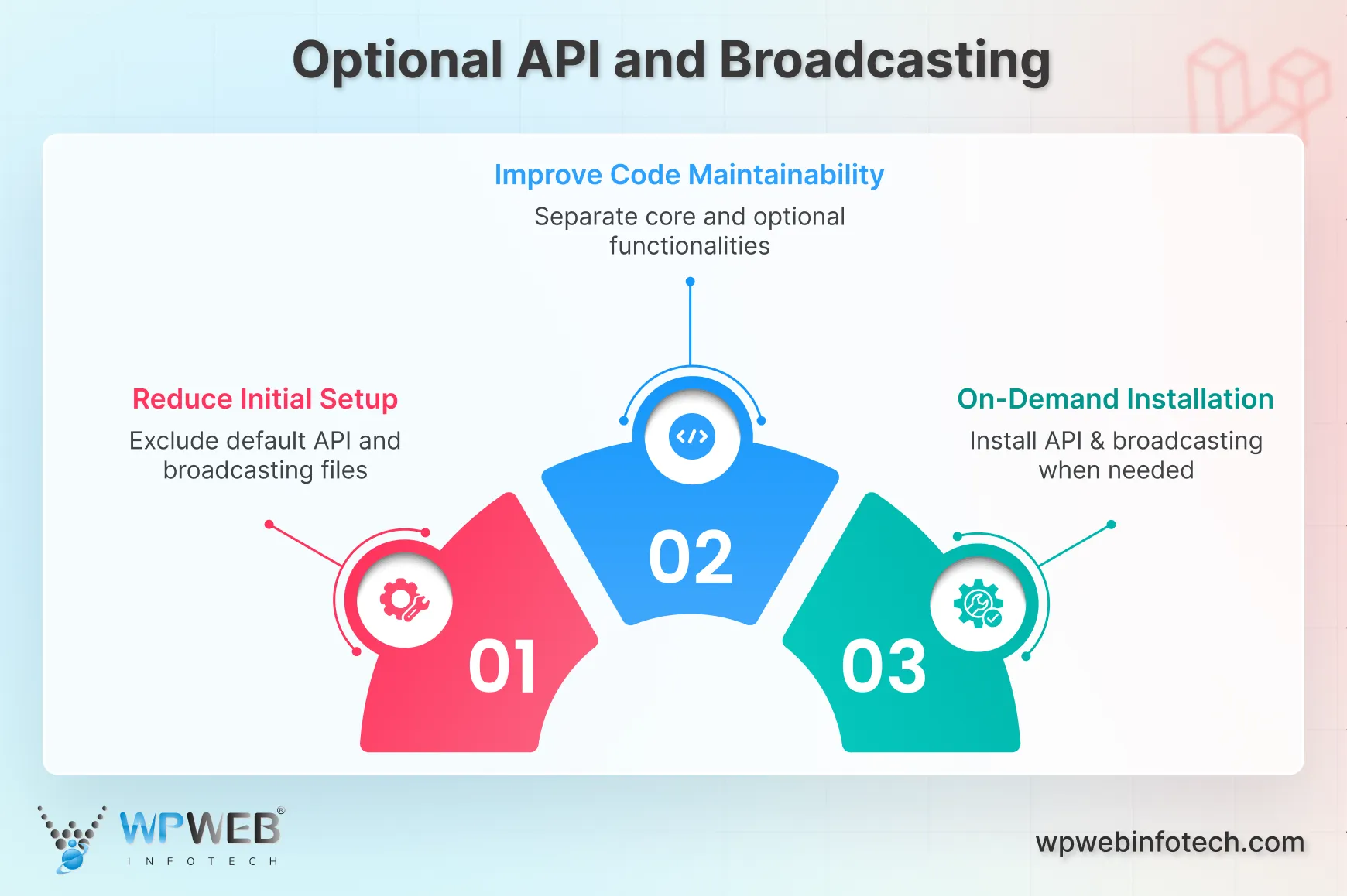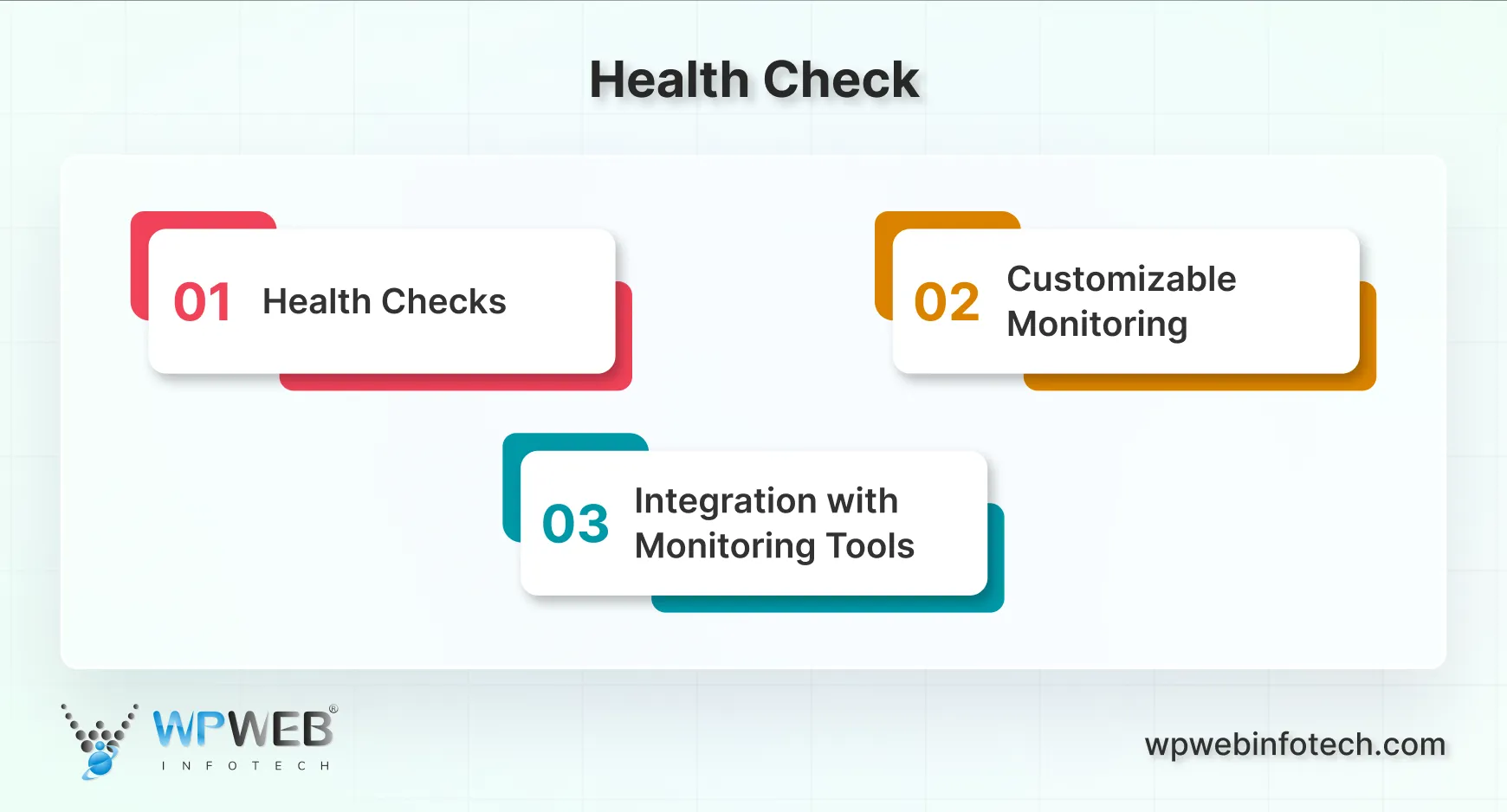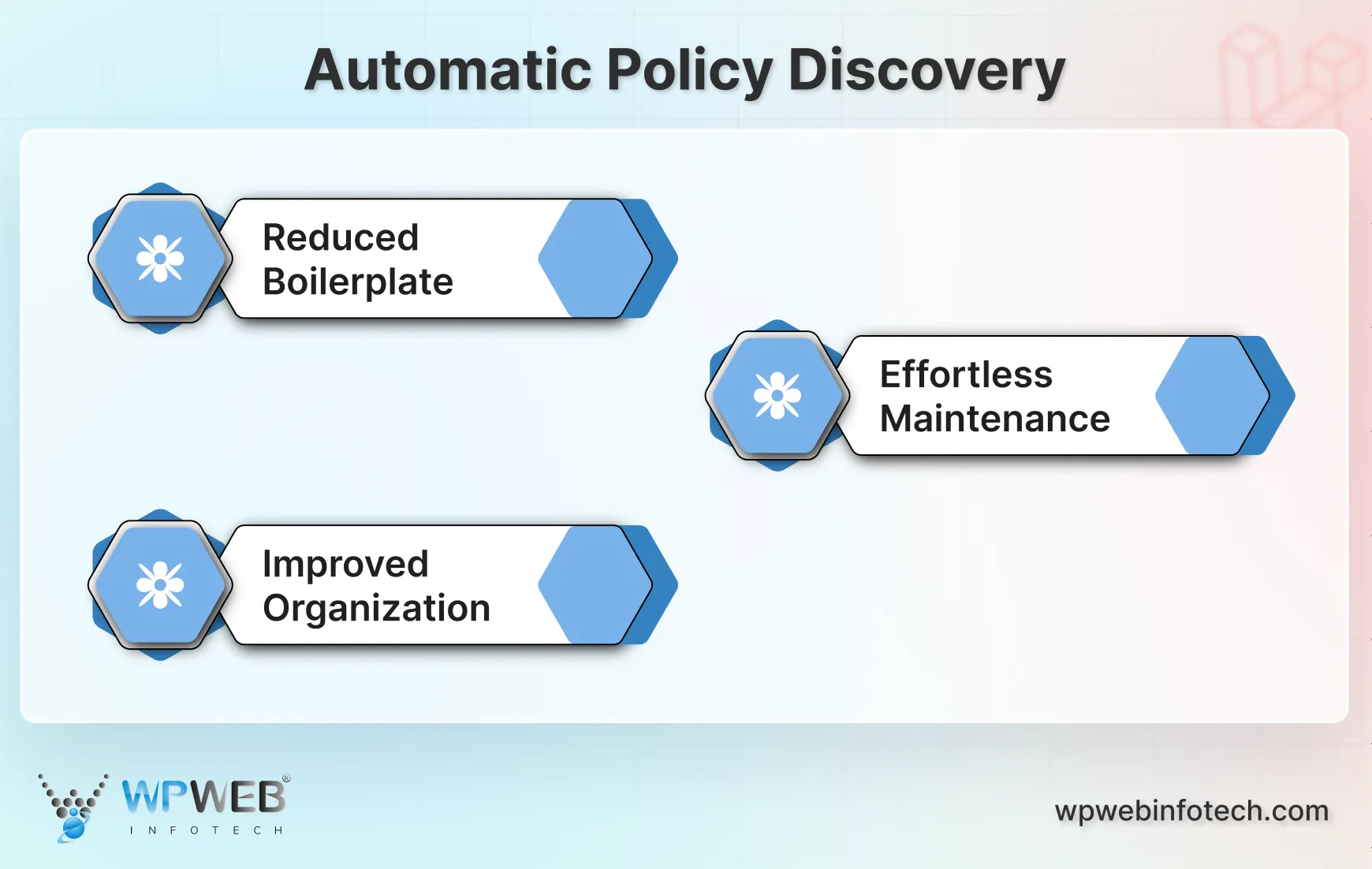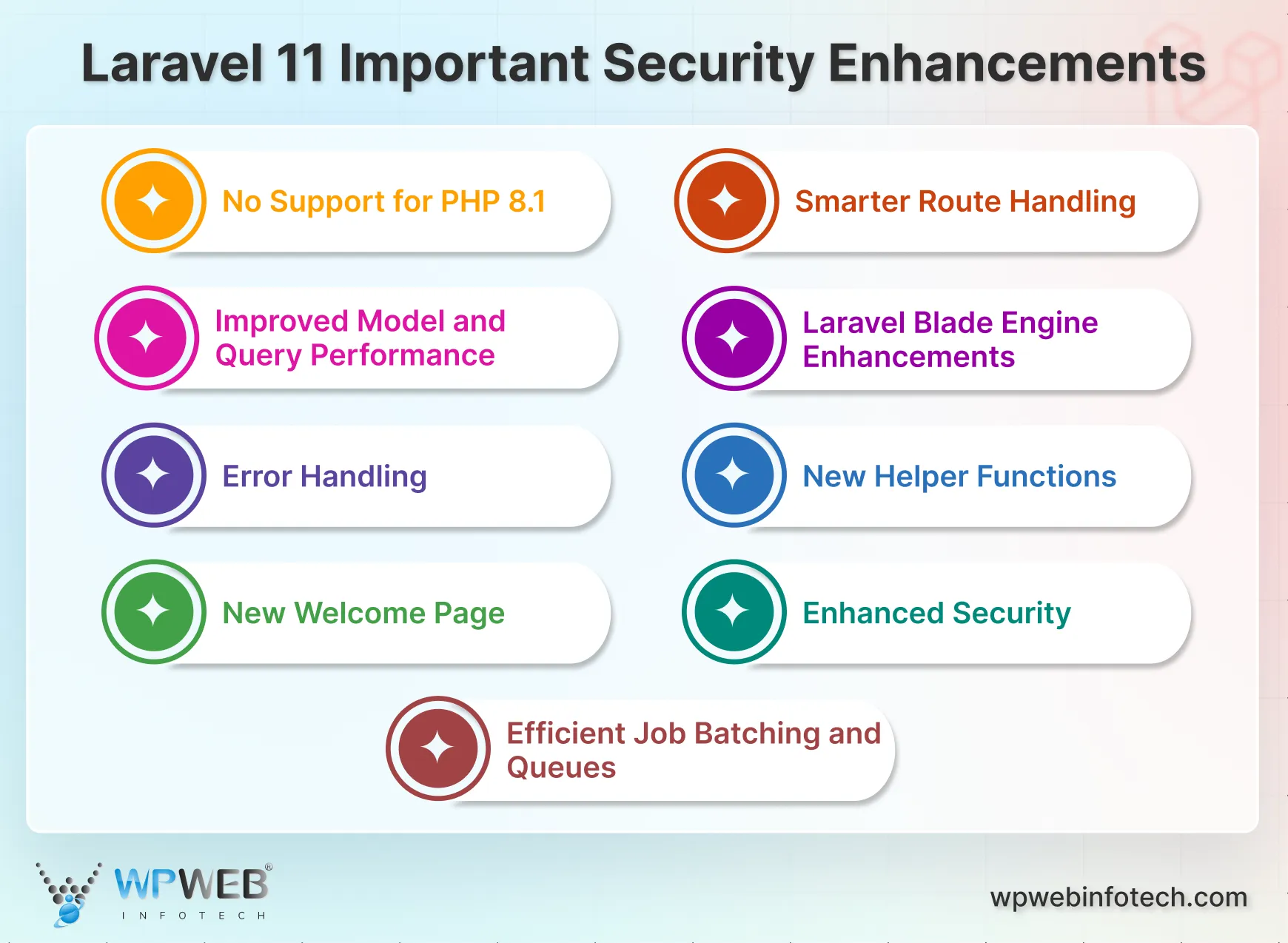Quick Summary
Discover the new features of Laravel 11, released in March 2024, with this in-depth guide. From Composer optimization and trimming unnecessary services to smart image handling and performance-boosting deployment tips, learn how experts build faster, leaner, and highly efficient web apps. Unlock practical strategies, modern tools, and insider insights to elevate your Laravel projects and harness the full potential of the newest features.
Table of Contents
Laravel is getting better and better with each release, and its Version 11 is no exception. Released in March 2024, Laravel 11 brings exciting new features and improvements that make development faster, easier, and more efficient.
In this blog, we’ll unpack everything that’s new in Laravel 11. And I’ll also tell you how the experts leverage these features to create the best websites and web apps. So, buckle up and get ready to unlock the full potential of the all-new Laravel 11.
What is New in Laravel 11?
Laravel 11 brings in a new era of streamlined development with a focus on efficiency and flexibility. Building upon the enhancements introduced in laravel 10, this update introduces a collection of improvements that improve the developer experience and empower you to build web applications with greater ease.
Let’s dive into some of the key features that define Laravel 11:
1. Slimmer Skeleton
Laravel 11 introduces a much-anticipated change; a slimmer application skeleton. So the unnecessary folders and configurations have been removed to make the default project structure more streamlined. Here’s what this means for your development workflow:
- Reduced Boilerplate. Folders like app/Console, app/Exceptions, and app/Http/Middleware have been removed. This prevents unnecessary files and simplifies project navigation.
- Centralized Configuration. Routes, middleware, and exception handling are now configured in the bootstrap/app.php file. This provides a central location for managing these essential application components.
- Improved Organization. The overall project structure is more streamlined and adheres to modern development best practices. This makes it easier for developers to understand and maintain the codebase.
Overall, the slimmer skeleton promotes a more focused and efficient development experience in Laravel 11. This aligns with the growing trend of clean and maintainable codebases, building on improvements introduced in laravel 9.0.
2. Removed Configuration Files
The new Laravel version streamlines configuration management by removing some default configuration files. This might seem a bit confusing, but it promotes a more efficient approach. Here’s a breakdown of the specific removed files and what it means for you:
- Reduced File Clutter. Files like config/broadcasting.php, config/cors.php, config/hashing.php, config/sanctum.php, and config/view.php are no longer included by default. This reduces unnecessary files in your project directory, making it easier to navigate and manage.
- Centralized Configuration. Many configuration options previously found in these files have been moved to the .env file. This provides a central location for managing environment-specific settings, promoting a more organized approach.
- Flexibility. You can still create custom configuration files if needed. This allows for granular control over specific functionalities within your application. It ensures you have the flexibility to tailor configurations to the project’s requirements.
The removal of certain configuration files in Laravel 11 promotes a cleaner project structure. It encourages the use of the .env file for environment-specific configurations. This makes managing your application’s settings more efficient.
3. Optional API and Broadcasting
It introduces a modular approach to APIs and broadcasting functionalities. This means they are no longer included by default, allowing you to integrate them only when needed. Here’s how this benefits your development process:

- Reduced Initial Setup. By not including routes/api.php and channels.php files by default, Laravel 11 reduces the initial project setup for applications that focus on web functionalities.
- On-Demand Installation. If you need API or broadcasting capabilities later, you can install them using Artisan commands like php artisan install:api and php artisan install:broadcast. This provides flexibility and keeps your project footprint lean.
- Improved Code Maintainability. It separates core functionalities from optional features like API and broadcasting. This promotes cleaner code organization and simplifies maintenance for projects that don’t use them.
The optional nature of API and broadcasting in Laravel 11 allows for a more streamlined development experience. That aligns with the growing trend of building modular and adaptable web applications.
4. Pest and SQLite as Defaults
The testing and database in Laravel 11 sets the Pest and SQLite as the default options. Here’s how it will make a difference throughout the development procedure:
- Modern Testing with Pest. Laravel 11 now uses Pest for unit and feature testing. Pest offers a clean and expressive syntax similar to BDD (Behavior Driven Development) frameworks. That makes testing more intuitive and enjoyable.
- Lightweight Database with SQLite. SQLite is a lightweight and embedded database engine. It has become the default database for local development in Laravel 11. This prevents the need for external database installations, simplifying the development setup process.
- Flexibility for Production. While SQLite is ideal for local development, you can switch to other databases like MySQL or PostgreSQL. You can use it for production environments with the configuration options in the .env file.
The switch to Pest and SQLite as defaults in Laravel 11 promotes a smoother development workflow. Pest simplifies testing, and SQLite facilitates quick project setup for local development. However, Laravel maintains flexibility for production environments, allowing you to choose the most suitable database for the application’s needs.
5. New Artisan Commands
Laravel 11 expands your development toolbox with a series of new Artisan commands prefixed with make:xxxxx. These commands streamline the process of generating various code components, boosting your development efficiency.
- Code Scaffolding. Commands like php artisan make:class, make:trait, make:enum, and make:interface. These allow you to create these code structures without manually writing boilerplate code. This saves you time and ensures consistency across your project.
- Code Organization. By using these Artisan commands, you can maintain a clean and well-organized codebase. Each component is generated in its designated location, promoting better code readability and maintainability.
- Developer Experience. The introduction of this new make:xxxxx commands helps to focus on core functionalities rather than repetitive code creation tasks. This translates to a more enjoyable and productive development experience.
The new Artisan commands in Laravel 11 provide valuable tools for scaffolding code components. This aligns with the framework’s principles of streamlining the development process for web artisans.
6. Health Check
Keeping your Laravel application healthy is important. To streamline this, Laravel 11 introduces a new route named /up. It is specifically incorporated for health checks. Here’s what this stands for monitoring your application:

- Health Checks. By sending a GET request to the /up route, you can verify if your application is running and responsive. This provides a basic health check to ensure your application is functioning as expected.
- Customizable Monitoring. The /up route triggers the DiagnosingHealth event. You can use this event to implement more detailed health checks tailored to your application’s specific needs. This allows you to monitor additional aspects like database connections or queue processing.
- Integration with Monitoring Tools. The simplicity of the /up endpoint makes it ideal for integration with external monitoring tools or systems like Kubernetes. This allows for automated health checks and alerts. Thus, benefits in ensuring your application’s uptime and performance.
The /up health check route in Laravel 11 provides a convenient and customizable approach to monitoring your application’s health. This aligns with the growing importance of proactive monitoring and maintaining application stability.
7. Dumpable
Streamlining the debugging process is essential for efficient development, and Laravel 11 introduces the Dumpable trait to simplify this task. Here’s how it empowers you to identify and resolve issues in your code:
- Debugging. The Dumpable trait provides dump and dd methods directly to your custom classes. This allows you to chain these methods onto object calls. It benefits you to inspect the state of your objects at any point in your code execution flow.
- Readability. By using dump and dd within your code, you can print the contents of variables and objects directly within your application logic. This improves code readability and makes it easier to pinpoint the source of errors.
- Boilerplate. The Dumpable trait eliminates the need to manually write dd or dump helper functions within your classes. This reduces boilerplate code and keeps your classes focused on core functionalities.
Overall, the Dumpable trait in Laravel 11 drives a more efficient debugging experience. It includes an integrated approach to inspecting variables and objects during development. This aligns with the goal of making the development process smoother and less error-prone.
8. Limited Eager Loading
Laravel 11 introduces a highly anticipated feature – limited eager loading. This functionality empowers you to control the number of related models eagerly loaded with a parent model. Here’s how it enhances performance and data management:
- Reduced Database Queries. By specifying a limit when eager to load related models, you can prevent unnecessary database queries. This is particularly beneficial for relationships that might have a large number of associated models.
- Improved Performance. Limiting eager loading reduces the amount of data transferred between the database and your application. This can lead to faster page load times and a smoother user experience.
- Granular Control. This feature provides developers with more control over the data fetched during eager loading. You can tailor the number of related models to your specific needs. This ensures you retrieve only the important data for your application logic.
Overall, limited eager loading in Laravel 11 promotes efficient data fetching and optimizes database interactions. This aligns with the growing focus on performance optimization and building scalable web applications.
9. Casts Method
Laravel 11 introduces a new approach to data type casting with the casts method. This method replaces the traditional $casts property, offering greater flexibility and control over how attributes are converted during model interactions. Here’s a breakdown of its benefits:
- Improved Readability. The casts method defines data type casting within the model class itself. This promotes cleaner and more readable code by keeping casting logic centralized with the related model attributes.
- Enhanced Flexibility. Unlike the static property, the casts method allows for dynamic casting logic. You can use methods or closures within the definition to achieve more complex data transformations based on specific scenarios.
- Maintainable Code. By defining casting logic within the model, you ensure that its behavior is documented and maintained alongside the related attributes. This improves code maintainability and reduces the risk of unexpected behavior.
Overall, the casts method in Laravel 11 streamlines data type casting and promotes a more organized approach to model attribute management. This aligns with the philosophy of clean code and simplifies the development process.
10. Once Method
The launch of Laravel 11 includes the once helper method. It is a valuable addition for situations where you need to guarantee a specific piece of code executes only once during a request. Here’s how it simplifies your development process:
- Preventing Redundant Logic. By wrapping code blocks within the once method. Using this you can ensure they are executed only on the first call. This prevents the risk of unintended consequences or performance issues caused by repetitive code execution.
- Improved Code Readability. The once method communicates the intent of the code block. This makes it easier for developers to understand and maintain the logic.
- Reusable Logic. You can create reusable functions or closures that use the once method to ensure they perform their actions only once within a specific context. This promotes code reusability and prevents redundant processing.
The once method in Laravel 11 benefits developers to write more predictable code by guaranteeing that crucial logic runs just once per request. This aligns with the best practices of avoiding unnecessary code execution and maintaining a clean codebase.
11. Removed Exception Handler
Laravel 11 takes a different approach to exception handling by removing the default exception handler. This might seem like a step backward, but it empowers developers with more control over how errors are managed within their applications.
- Customizable Error Responses. With the default handler gone, you have complete control over how exceptions are handled and displayed. You can tailor error messages and response codes to provide a more informative and user friendly experience.
- Flexibility for Different Error Types. This approach allows you to define specific handling logic for different types of exceptions. You can create custom exception classes and handlers to address specific scenarios within your application.
- Integration with Third-Party Libraries. Removing the default handler prevents conflicts with error handling mechanisms used by third-party libraries you might integrate with your project. This ensures integration and avoids unexpected behavior.
The removal of the exception handler in Laravel 11 provides developers with greater flexibility and control over error handling. This aligns with the growing trend of building custom and robust error management strategies for web applications.
12. Automatic Policy Discovery
Laravel 11 introduces a time-saving feature – automatic policy discovery. This functionality simplifies the process of associating authorization policies with your models. It also streamlines the authorization management within your application. Here’s what it offers:

- Reduced Boilerplate. Gone are the days of manually registering policies in your AuthServiceProvider. Laravel 11 automatically discovers policies based on their naming conventions, eliminating the need for repetitive configuration.
- Improved Organization. By following the convention of placing policies in a Policies directory within your model directory structure, Laravel associates them with the corresponding model. This promotes a clean and organized project structure.
- Effortless Maintenance. As your application grows, adding new models and policies becomes easier. Automatic discovery ensures proper authorization checks are implemented without the need for manual configuration updates.
This automatic policy discovered in Laravel 11 streamlines authorization setup and promotes efficient code maintenance. This aligns with the philosophy of reducing boilerplate code and keeping your application structure well-organized.
13. Consolidated Migrations
Managing database schema changes through migrations is crucial for Laravel applications. Laravel 11 introduces a streamlining approach by consolidating default migrations. Here’s how it benefits your development workflow:
- Reduced File Clutter. The default migrations from 2014 and 2019 have been merged into two core files – create_users_table.php and create_password_resets_table.php. This prevents unnecessary migration files and keeps your database migration directory organized.
- Focus on New Migrations. By reducing the defaults, you can now focus on creating new migration files specific to their application’s needs. This simplifies version control and makes it easier to track changes to your database schema.
- Clearer Project Structure. With fewer default migration files, your project directory becomes more streamlined and easier to navigate. This promotes better code organization and simplifies maintenance for both you and your team.
Overall, compressed migrations in Laravel 11 improve database schema management by reducing clutter and promoting a clearer project structure. This aligns with the growing best practices of maintaining well-organized and easy-to-understand codebases.
14. Streamlined Bootstrap File
Laravel 11 includes a revamped bootstrap/app.php file, aiming to streamline the application initialization process. Here’s a breakdown of how this benefits developers:
- Reduced Complexity. The bootstrap/app.php file now focuses on essential application bootstrapping tasks like service provider registration and environment configuration. This prevents unnecessary code and makes it easier to understand how your application gets initialized.
- Improved Readability. The cleaner structure of the bootstrap/app.php file improves code readability. This allows developers to quickly identify and modify specific configuration settings without getting lost in overly complex logic.
- Modular Approach. The separation of concerns within the bootstrap/app.php file promotes a more modular approach to application initialization. This makes it easier to maintain and extend your application’s bootstrapping process as your project grows.
The streamlined bootstrap/app.php file in Laravel 11 simplifies application procedures and promotes a more readable and maintainable codebase. This aligns with the best practices of keeping configuration clear and concise for efficient project management.
15. Custom Artisan Integration
Laravel 11 benefits developers to create custom Artisan commands, further extending the functionality of this powerful command-line tool. Here’s how you can leverage this feature to streamline your development workflow:
- Automated Tasks. You can define custom Artisan commands to automate repetitive tasks within your development process. This could involve tasks like generating boilerplate code, deploying your application, or running custom data migrations.
- Improved Efficiency. By automating tasks with custom commands, you can save time and effort during development. This allows you to focus on core functionalities and complex logic within your application.
- Enhanced Code Reusability. Custom Artisan commands can be packaged and shared as reusable libraries. This promotes collaboration and streamlines development workflows within your team or the wider Laravel community.
The custom Artisan integration in Laravel 11 extends the functionality of this versatile tool and automates tasks for a more efficient development experience. This aligns with the growing trend of leveraging automation to streamline workflows and improve development productivity.
If you need help leveraging these features for your website or web app, hire an expert Laravel development company.
Laravel 11 Important Security Enhancements
Laravel 11 comes with performance improvements and stronger security. It’s designed to help developers build faster, cleaner, and safer web applications.

No Support for PHP 8.1
Laravel 11 requires PHP 8.2 or higher. Support for PHP 8.1 has been dropped, so developers must upgrade their PHP version to run the latest Laravel apps. To verify your current setup, follow how to check laravel version. This ensures better performance, security, and compatibility with modern PHP features.
Smarter Route Handling
Routing in Laravel 11 is now simpler and more flexible. Developers can define complex routes more clearly, reducing boilerplate code and making apps easier to maintain.
Improved Model and Query Performance
Database operations are faster. Laravel 11 optimizes queries, reduces unnecessary database calls, and improves performance for applications with heavy traffic.
Laravel Blade Engine Enhancements
The Blade templating engine receives updates that simplify syntax and improve rendering speed. Templates load faster, and developers can write cleaner, more readable view code.
Error Handling
Error handling is more robust and developer-friendly. Detailed error messages and better exception management make debugging quicker and less frustrating.
New Helper Functions
Laravel 11 introduces new helper functions to simplify common tasks. These functions save time, reduce repetitive code, and improve developer productivity.
New Welcome Page
A refreshed Welcome Page provides a modern, user-friendly starting point for new projects. It gives developers a clean interface and quick access to essential documentation and resources.
Enhanced Security
Security has been strengthened with:
- Improved CSRF protection
- Updated encryption methods
- Fine-grained authorization controls
These updates ensure that user data stays safe and access rules are easier to manage.
Efficient Job Batching and Queues
Job batching and queue handling are faster and more reliable. This helps large applications handle asynchronous tasks smoothly and reduces background processing delays.
In short, Laravel 11 combines speed, security, and developer convenience. From modernized routing and Blade enhancements to improved performance and helper functions, it equips developers with the tools to build faster, smarter, and safer applications. For teams looking to upgrade projects efficiently, laravel shift provides a reliable automated migration solution, reducing manual effort and ensuring compatibility with the latest Laravel standards.
As Laravel continues to evolve, each version brings new opportunities for developers to improve application performance and streamline development workflows. If you’re planning ahead, exploring laravel 12 can give you insights into upcoming features, enhancements, and best practices that will help you stay ahead in building modern, efficient web applications.
To Summarize
Laravel 11 brings in a new era of streamlined development with a focus on efficiency and flexibility. This update introduces a collection of improvements that enhance the developer experience and help you to build web applications with greater ease. From a slimmer project skeleton to new Artisan commands and automatic policy discovery, Laravel 11 offers a wide range of features to optimize your development workflow.
Whether you’re considering upgrading an existing application or starting a new project from scratch, understanding the latest features in Laravel 11 is essential. This guide explored the key changes and improvements you can leverage to build modern, efficient, and scalable web applications.
Ready to leverage the power of Laravel 11 for your next project? Then, our Laravel developers for hire will be most suitable.
FAQs About Laravel 11
Should I upgrade to Laravel 11?
Upgrading to Laravel 11 offers a set of advantages. The streamlined structure, new features like make:xxxxx Artisan commands, and improved testing with Pest all contribute to an efficient development experience. While some minor adjustments might be required for existing code due to breaking changes, the overall benefits often outweigh the upgrade effort.
Will my existing Laravel code still work with version 11?
Laravel 11 maintains a high degree of compatibility. However, there are some breaking changes, particularly related to the removal of configuration files and the default exception handler. Carefully reviewing the upgrade guide and addressing any potential conflicts will ensure a smooth transition to Laravel 11.
What kind of web applications can I build with Laravel 11?
Laravel 11 remains a versatile framework suitable for building a wide range of web applications. From simple content management systems to complex eCommerce platforms or real-time applications, Laravel 11’s features and extensive ecosystem empower you to create powerful and scalable web solutions.
What is the difference between Laravel 10 and 11?
Laravel 11, released in March 2024, brings performance improvements, enhanced routing, new helper functions, Blade updates, and stronger security. It also drops support for PHP 8.1, requiring PHP 8.2 or higher. While Laravel 10 laid the foundation, version 11 focuses on speed, efficiency, and modern development practices.
Is kernel missing in Laravel 11?
No, the kernel is not missing. Laravel 11 retains both the HTTP and Console kernels, which manage requests and command-line tasks. The structure remains similar to previous versions, so developers familiar with Laravel 10 will find it consistent and easy to work with.
Is Laravel 11 compatible with Laravel 10 projects?
Most Laravel 10 projects can be upgraded to Laravel 11 with minor adjustments. You’ll need to ensure your PHP version is 8.2 or higher and check for deprecated features, but overall, the framework maintains backward compatibility to make migration smoother.
Do I need to learn anything new to use Laravel 11 effectively?
If you know Laravel 10, you’ll find Laravel 11 familiar. However, learning the new helper functions, Blade enhancements, and Octane integration can help you fully use the performance and efficiency improvements. These updates are mostly additive, not disruptive.
Build Powerful Laravel Applications
Harness Laravel 11’s new features to create fast, secure, and scalable web apps.





